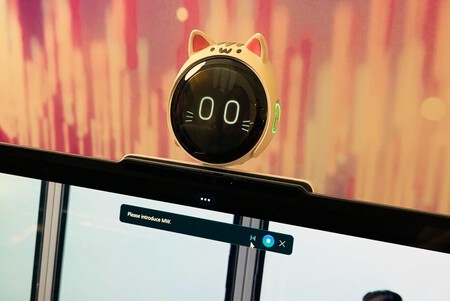Lenovo recently unveiled new products at MWC 2025. The brand presented laptops, 3D monitors, and an interesting ecosystem of screens that attach to laptops, utilizing the Magic Bay connector. This ecosystem includes a complete dual-panel module and a special display designed for AI.
When I travel, I usually take my laptop and tablet so I can work from anywhere, whether using a single screen or combining both devices for a dual desktop setup. Lenovo’s latest innovation has created a new need for me: a system of screens that can be attached and detached in seconds. Whenever you need more workspace, you need just one click and a widescreen monitor will be ready to use.
Lenovo Enhances the Utility of Its Magic Bay

The first Magic Bay add-on I saw was a dual-panel model with one screen on each side of the laptop. The Dual Screen Concept effectively increases the usable surface area, giving the impression of a widescreen setup. Although I was initially surprised by this feature, I was slightly disappointed to learn that it’s still a concept for now. However, a Lenovo representative showed me a variety of other interesting display models, totaling four.
The concept is straightforward. Specific Lenovo ThinkBook models have a small pin connector with a magnetic component attached in the upper area. When a module is docked, the system recognizes it and expands its capabilities based on the accessory used. After a long period without updates, Lenovo introduced new functions for the port.
At MWC 2025, Lenovo showcased four Magic Bay displays:
- Dual Screen Concept. This option features one screen on each side of the main laptop display, expanding the desktop area to the left and right. It feels almost as if you have a curved widescreen panel, and there’s no noticeable lag when moving the cursor between the screens.
- Second Display Concept. This smaller screen is oriented vertically and allows users to expand their work area without losing focus on the main screen. It can be used for tasks like browsing, copying data, and watching videos.
- Tiko Pro Concept. Once it’s magnetically attached, this small horizontal screen projects essential information for the user. I was shown several applications for it, such as acting as a system monitor, serving as a teleprompter for video readings, and functioning as a simultaneous translator.
- Tiko Concept. A scaled-down version of the previous model, this round screen has a playful charm, featuring customizable animal covers (I particularly loved the cat design). It can display information or function as an interface for an AI agent, among other uses.
 Lenovo’s Tiko Concept.
Lenovo’s Tiko Concept.
One key feature is that the panels don’t take up much space when removed. The Dual Screen Concept is the largest module and can be folded to reduce its size. Removing and attaching the panels is also easy: Simply bring the Magic Bay close to the screen to engage the magnetic connection. It’s sturdy and offers good resistance, even when using the Dual Screen. In fact, it’s much larger than it appears. It’s quite impressive when unfolded.
Different Usage Formats Depending on Your Needs
 Lenovo’s Dual Screen Concept.
Lenovo’s Dual Screen Concept.
Magic Bay and the Dual Screen Concept are ideal for those who need to take their laptops on the go and could benefit from an expanded desktop. I also found the Tiko Concept to be especially useful, particularly the Pro model. Having system performance information readily available is perfect for testing and analysis. The side screen is practical for multitasking without sacrificing space in the center of the laptop.
Lenovo provides customization tools for the panels, and all of them are plug-and-play. Once connected, the content adjusts seamlessly to the connected accessory. In the case of the side screens, Windows automatically recognizes them as extended displays, allowing for smooth mouse movement across screens as if they were part of the same panel. I didn’t experience any glitches or slowdowns, even though they’re currently in the concept stage.

One drawback is that the secondary displays compatible with Magic Bay have yet to be finalized. Lenovo hasn’t provided pricing or estimated release dates, so you’ll need to wait for further information. However, as long as the prices don’t become excessively high, I believe it’ll be worth the wait.
Images | Xataka | Lenovo
Related | Lenovo Yoga Solar PC: Introducing the First Ultra-Thin Solar-Charged Laptop




Log in to leave a comment